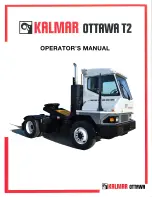
4-27
Driving on Snow or Ice
Most of the time, those places where your tires meet the
road probably have good traction.
However, if there is snow or ice between your tires and
the road, you can have a very slippery situation. You’ll
have a lot less traction or “grip” and will need to be
very careful.
What’s the worst time for this? “Wet ice.” Very cold
snow or ice can be slick and hard to drive on. But wet
ice can be even more trouble because it may offer the
least traction of all. You can get wet ice when it’s about
freezing (32
_F; 0_C) and freezing rain begins to fall.
Try to avoid driving on wet ice until salt and sand crews
can get there.
Whatever the condition
--
smooth ice, packed, blowing
or loose snow
--
drive with caution.
If you have traction control, keep the system on. It will
improve your ability to accelerate when driving on a
slippery road. But you can turn the traction system off if
you ever need to. You should turn the system off if your
vehicle ever gets stuck in sand, mud, ice or snow. See
“Rocking Your Vehicle” in the Index. Even though your
vehicle has a traction system, you’ll want to slow down
and adjust your driving to the road conditions. See
“Traction Control System” in the Index.
Summary of Contents for 2003 C4C042
Page 1: ......
Page 6: ...v Here are some examples of symbols you may find on your vehicle ...
Page 66: ...1 59 United States Canada ...
Page 143: ...2 68 The Instrument Panel Your Information System ...
Page 302: ...6 48 Single Axle Models ...
Page 329: ...6 75 GM Vehicle Care Appearance Materials ...
Page 377: ...7 31 Maintenance Record DATE ODOMETER READING SERVICED BY MAINTENANCE PERFORMED ...
Page 378: ...7 32 Maintenance Record DATE ODOMETER READING SERVICED BY MAINTENANCE PERFORMED ...
Page 379: ...7 33 Maintenance Record DATE ODOMETER READING SERVICED BY MAINTENANCE PERFORMED ...
Page 380: ...7 34 Maintenance Record DATE ODOMETER READING SERVICED BY MAINTENANCE PERFORMED ...










































